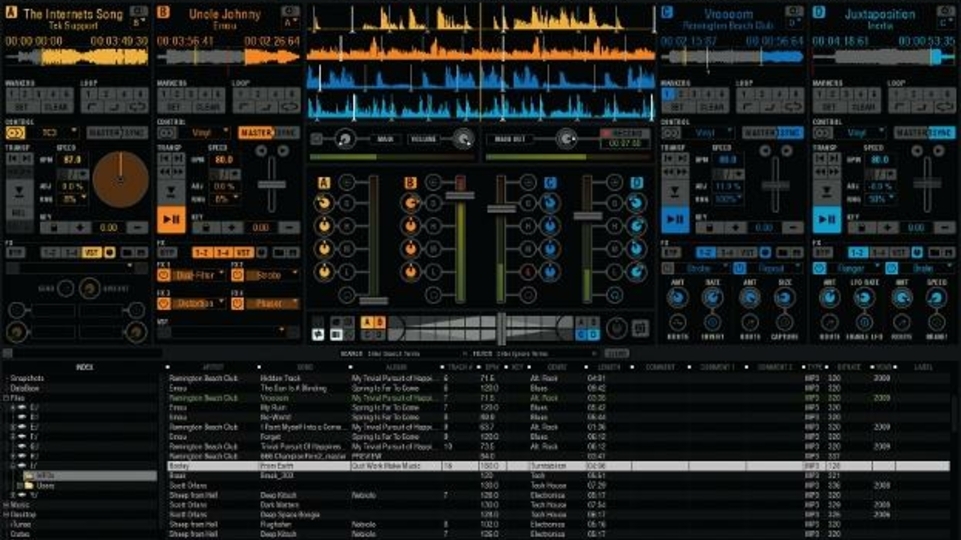All The Torq About Town
Avid are not new to the digital DJing arena — but will they be the talk of the town with their Torq 2 digital DJ software upgrade?

It all started with Jimmy Savile. Spinback to 1947, and legend dictates that Sir Jimmy, armed with nothing more than two turntables and a microphone, rocked the Grand Records Ball at the Guardbridge Hotel. The concept of the DJ was born and the history books written. Technology dictated the dancefloor then and has continued to evolve ever since.
In 1972, the Technics SL-1200 series of turntables was launched. Quickly adopted by DJs, the SL-1200 soon became the industry’s first standard. With each technological step in DJing, a new music-playing machine has dominated the dancefloor. When CDs gained ubiquity over vinyl, it was Pioneer’s CDJs and in this era of the laptop, Native Instruments Traktor PRO and Serato Scratch are currently fighting for the crown. But DJing is all about individuality. Both through the tracks you play and the way you play them, and not just following the herd.
Now, more so than ever, the choice in delivering this individualism is vast. Traktor/Serato may well be the current faves, but there is a wealth of other digital DJ options available, constantly looking to evolve the way we perform. One such option is from Avid, the makers of Pro Tools who, through their most recent incarnation of Torq DJ software, are trying to reinvent the tools used to keep the dancefloor rocking.
Originally, Torq was introduced as an M-Audio product operating within a closed environment. With only M-Audio's own hardware allowed to play with the software, an obvious barrier existed for DJs with third-party controllers, or DJs who didn’t rate Torq’s own hardware. Thankfully, lessons have been learnt, and now Torq 2.0 will operate with any MIDI device you throw at it. And that’s not the only big change. Torq has been rebuilt by Pro Tools engineers from the ground up, hence why it is now packaged under the Avid brand and claims to be a major step forward in the evolution of the digital DJ.
On launching Torq 2.0, it’s clear that we’re looking at a beast of a programme. Sporting a futuristic dashboard more at home in the hands of James T Kirk than Sir Jimmy’s protégés, it’s a fairly intimidating look. Things can be made a little less complicated by choosing two-deck mode, which hides two of the four decks available.
Despite the hi-tech appearance, the layout is fairly familiar, with a waveform display at the top and a browser for your tracks at the bottom. Mixer controls are centred with individual deck and effect controls to the left and right. Everything is customisable, with a choice of colour schemes reminiscent of those available in Ableton Live. Clearly, a lot of attention has been paid to a layout that works well in a dark environment.
FOUR-TO-THE-FLOOR
A total of four decks are available, with each deck offering standard transport controls, multiple cue points, looping and effects. Each deck has four different control modes, ranging from vinyl and CD emulation to time-coded control.
We found the audio quality to be great, with automatic beat detection, synching and looping all behaving admirably over a wide range of genres. Time-stretching was equally impressive and still sounded usable under some fairly extreme pitch and speed settings.
Like FL Studios’ Decadence programme, Torq can host VST effects to compliment the 10 built-in effects. The manual is fairly open in highlighting the potential latency pitfalls of using third party plug-ins, as Torq operates without plug-in delay compensation. However, we found the VST effects we tried worked well and the support was a nice feature to have. Torq’s own effects are a standard DJ-friendly selection of delays, reverbs, filters, stutters and many more. Four built-in effects and one VST effect can be assigned to each deck, providing plenty of sound-manipulating potential.
JEWEL IN THE CROWN
We found the jewel in Torq’s crown to be the crossfader. It really does offer something new — dare we say, a bit revolutionary. Through Avid's ‘Traq Morph’ technology, crossfades adopt a choice of four modes, with each mode applying a different effect to the fade. So instead of simply altering volume, the fader introduces effects that provide a smooth transition between tracks. For example, in frequency mode, you can gradually apply a tonal crossfade, which sweeps the frequencies from one track to another.
Or in cut mode, the crossfader applies a ‘French house’-style cutting/ducking effect. This morph technology is something that really needs to be heard to be appreciated, and is great fun to use. Our only fear is that we could imagine some DJs overusing the fader effect and applying it to every mix. However, that shouldn't detract from what is a really inventive feature, and something we would love to see Avid develop further in future updates.
Verdict
| Price | £190.00 | |
| Contact | avid.com | |
| Build Quality |
8.0 | |
| Ease of Use | 7.0 | |
| Features | 9.0 | |
| Value for Money | 8.0 | |
| Sound Quality | 8.0 | |
| Hype | Crossfader technology is sublime and a really unique feature. It’s great to see time-coded vinyl and CD control included in one software package without being fragmented into an alternative version of Torq. | |
| Gripe | The layout is a little intimidating, and some tempo issues were experienced when playing back samples. | |
| Conclusion | Torq certainly offers something new in a crowded market of DJ software. Whether it can compete against Native’s Traktor PRO 2 or Serato’s DJing software, only time will tell. However, we believe it certainly offers a pretty decent alternative, with some unique features, and would highly recommend checking out the free 30-day demo available on Avid’s website. Sir Jimmy would be very proud. | |
| Shop |